Africa in Words Guest: Bronwen Everill
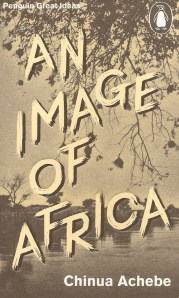
In my three years of teaching African history at a variety of levels (first, second, and third years; MA students), I have continually been pleasantly surprised by the quality of debate that African history provokes, and the level of critical (self) awareness that students bring to the topic. But that doesn’t mean they find it easy! For those of us putting together an African history survey course aimed at first years, we may not find it easy either. The first year that I taught African history, it was a second year course – so, the students were already more experienced – that had already been prepared – by someone more experienced. When it came time to teach my own course, I was working with some existing material from my predecessor, but his speciality was East Africa, and mine is West Africa, so I knew a lot would need to change.
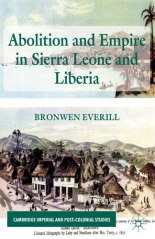
I decided to make the focus broad so that students could explore new interests in the lectures and seminars and focus on specific regions later, in their essays. The coverage was ostensibly 1800 to the present, although I tended to start earlier than 1800 as ‘background’ for the first few weeks. I wanted to avoid just teaching about Africa from the colonial period to the present, even though I knew that Africa’s global encounters would need to play an important role in order to anchor this history in the history these undergraduates had already studied. I wanted to make sure to convey a sense of precolonial history and of dynamic change over time. (I used Iliffe’s Africans: The History of a Continent as the textbook background reading.)
I also wanted to make sure that they felt they left the module with concrete new knowledge and new ways of conceiving of Africa’s role in the world. I hoped to achieve this in two ways. First, by making them take repeated map quizzes of the countries of Africa over the course of the year (to make it stick!). In my experience, students love a bit of something they can pull out for pub quizzes! But this was also about helping them to get over the ‘Africa is a Country’ mentality (exemplified in this hilarious
parody).
The second goal was to encourage them to think critically about the Western portrayals of Africa they encountered in the media. But I also felt that the course needed a unifying theme, in order to give a shape to the expansive topic. Working from the assumption that they would have little experience with African history in their A levels, I decided to confront their preconceptions of the continent head-on, by starting out with Philip Curtin’s The Image of Africa, Binyavanga Wainaina’s ‘How to Write about Africa’, Chinua Achebe’s An Image of Africa, and this preview for the film Machine Gun Preacher. Together, we unpacked common misconceptions about Africa in the media, and discussed the terminology that would and wouldn’t be appropriate for discussions and essays, and which I hoped would get us on to neutral ground for the rest of the year.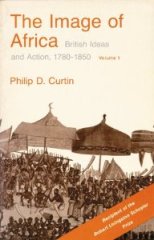
This approach was very successful. Almost too successful! I felt by the middle of the year that the ‘Image of Africa’ was getting a bit worn out as a concept. Part of the danger of assigning this reading early was that this was one of the few things they all read, and read carefully, when they were still keen in the early weeks of university. This made it comfortable ground (especially when they hadn’t done that week’s reading…).
So the next year I decided not to start with that, but to have a special teaching day, midway through the first term, where we would cover the ‘Image of Africa’ along with a workshop in which we would discuss writing about Africa, and essay writing more generally (I also added this excellent video from Mama Hope). I also added a teaching day on sources in African history, to devote a whole afternoon to this topic. We used Falola and Jennings’ Sources and Methods in African History and Getz and Clarke’s really excellent and innovative Abina and the Important Men. The teaching days were successful, and again the ‘Image of Africa’ was a popular approach for the students for the rest of the year (read: lots of essays on the topic). But because it hadn’t been the ‘frame’ for the module, it didn’t dominate discussion as it had the year before. So that was a bit of an improvement. But then there wasn’t really anything holding the module together, or giving students that initial ‘in’ to a subject that is both literally and figuratively foreign to them.
The Image of Africa approach achieved my goals of giving the course a unifying theme, and helping the students learn to think critically about the images of Africa they encounter every day. One part-time, evening student told me that she had explained the idea to her mother in the context of a film preview they had seen together. Another student told me that he couldn’t stop seeing the images everywhere now that he knew about it. Across the spectrum of students, feedback was really positive, I think in large part because they could see how a mentality that emerged in the eighteenth and nineteenth century was still very relevant today. Given that these students had chosen to study history, this was powerful ammunition for facing down the question of its relevance as a degree choice!
In the future, I might think about arranging the course thematically, rather than chronologically. There is certainly an argument for this in institutions with more than one Africanist, where team-teaching is an option. This would also avoid the trap of the appearance of ‘inevitability’ when it came to discussing colonial rule. (As many times as you warn them not to say it, essays still come in with the word ‘inevitable’ when they’ve written on the Scramble.) Of course, I would have to be careful again to emphasize change over time, since themes can give the impression of stasis. Where a thematic approach is not an option, I think the Image of Africa approach was still really useful for the students, even if it did become a bit tiresome to read about by the end of the year.
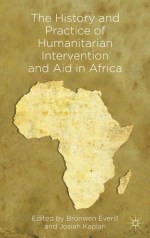

Bronwen is a Leverhulme Early Career Fellow at King’s College London. She has previously taught at Oxford and Warwick. Her recent publications include Abolition and Empire in Sierra Leone and Liberia (Palgrave, 2013) and (Palgrave, 2013).
Categories: Research, Studies, Teaching
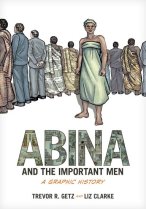
 Spotlight on… Step back and step aside: Rereading Caroline Rooney on animism and African literature, a quarter of a century later
Spotlight on… Step back and step aside: Rereading Caroline Rooney on animism and African literature, a quarter of a century later  Review: Tragedy and Resilience in Lagos – The Truth About Sadia by Lola Akande
Review: Tragedy and Resilience in Lagos – The Truth About Sadia by Lola Akande  Reviews: ‘Everyday life’ — Karin Barber’s A History of African Popular Culture (2018)
Reviews: ‘Everyday life’ — Karin Barber’s A History of African Popular Culture (2018)  Q&A: Eyob Derillo– Literatures of the Horn of Africa, a conversation series
Q&A: Eyob Derillo– Literatures of the Horn of Africa, a conversation series
Your students might also appreciate “Darkest Austria,” a very amusing mock documentary by an apparent West African scholar that turns many western assumptions about Africa inside out: http://www.youtube.com/watch?v=3e5mivkXmsc. It is 45 minutes long, but the point is made early on.